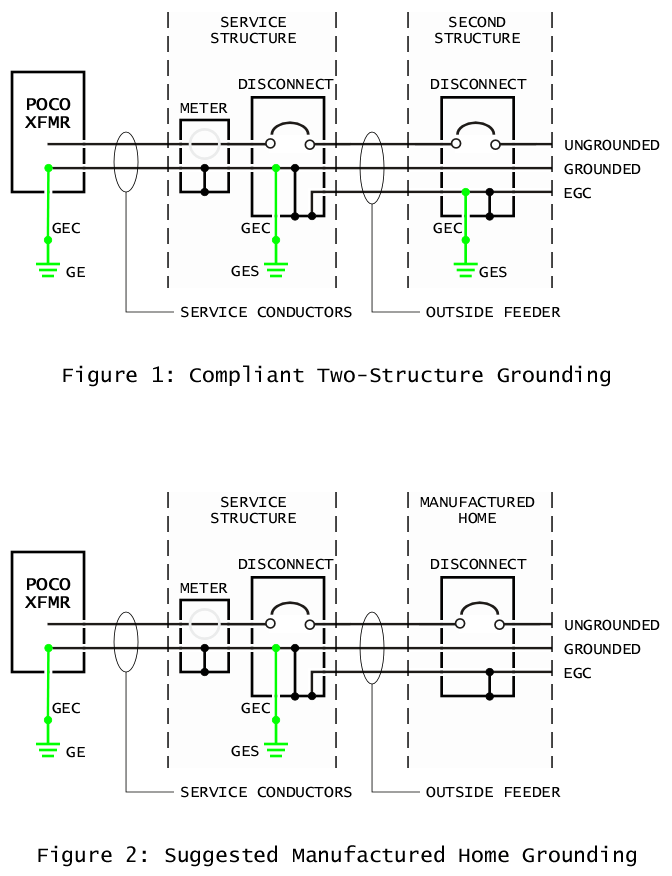For sure... but the debate is whether another is also required for the home itself when the service structure is adjacent... not in or on.The GES is installed at the service structure.
I'm not checking the reference, but yes... run with feeder conductors.The EGC as given in 550.16(B)(1) is run through the feeder.
Only direct reference to a GEC in 550 is 550.32(B).So the question is: Where is the GEC connected? Which I thought was being addressed by 550.16(A)?


